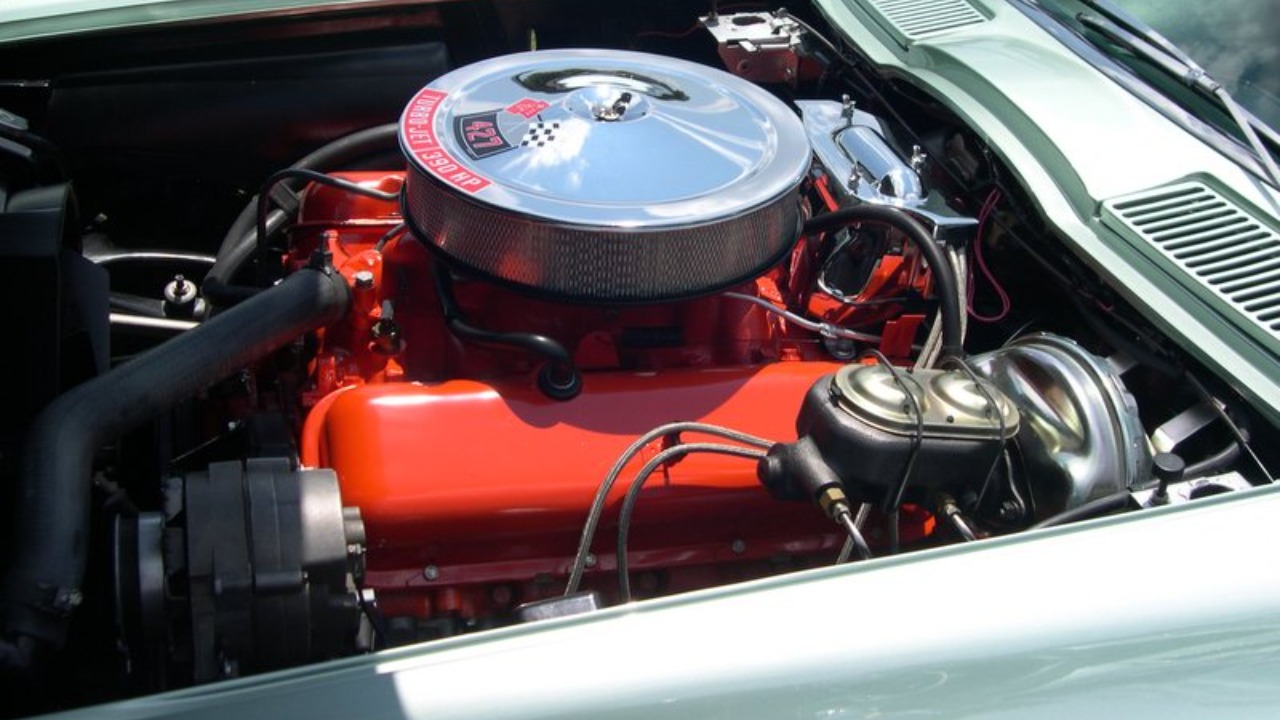
The Chevy 454 V8 and the Pontiac 455 V8, two of the most iconic engines from the 1970s, have powered some of the most memorable muscle cars of that era. The Chevy 454, particularly in its high-performance LS6 variant, demonstrated its power potential when a built example flexed close to 500 HP on the dyno, although it also bled oil and smoked under load. On the other hand, the Pontiac 455 V8 stood out for its unique torque-focused design. Understanding the differences between these two engines provides key insights into GM’s diverse approach to V8 engineering.
Origins and Development of the Chevy 454
The Chevy 454 was introduced as part of GM’s Mark IV big-block family in the late 1960s. It evolved from earlier 396 and 427 designs to meet the demands for higher displacement in full-size cars and trucks. The engine’s development prioritized versatility across Chevrolet’s lineup, from Corvettes to Chevelles, setting it apart from divisional rivals. The 454 played a significant role in high-performance variants like the LS6, which became a benchmark for factory muscle car output before emissions regulations curtailed production.
Origins and Development of the Pontiac 455
The Pontiac 455 has its roots in Pontiac’s Super Duty program in the 1960s. It evolved from the 421 and 428 engines to achieve 455 cubic inches by 1970 for compliance with GM’s corporate displacement cap. The 455 debuted in models like the Firebird and Grand Prix, with Pontiac emphasizing torque over outright horsepower to suit the brand’s performance philosophy. The Pontiac 455 shared similar displacement with other GM big-blocks, such as the Oldsmobile 455, but differed in block casting and valvetrain, as explored in a June 29, 2025, analysis.
Design and Architectural Differences
The Chevy 454’s Mark IV big-block architecture included siamesed cylinder bores, a deep-skirt block, and rectangular-port heads that allowed for better high-RPM breathing compared to Pontiac’s setup. In contrast, the Pontiac 455 featured a unique Pontiac big-block design with larger bore spacing, round-port heads, and a more robust crankcase to handle high-torque loads in street applications. Both engines shared GM engineering traits like four-bolt mains, but Pontiac’s custom tooling made the 455 incompatible with Chevy parts without significant modifications.
Performance Specifications Breakdown
The Chevy 454, particularly the LS6 version, was rated at 450 HP and 500 lb-ft of torque in 1970, establishing it as a drag-strip dominator in stock form. In contrast, the Pontiac 455’s specs peaked at around 360-390 HP and over 500 lb-ft in early versions like the 1970 Ram Air IV, prioritizing low-end grunt for acceleration over top-end speed. A built Chevy 454 LS6 demonstrated its tuning advantages by achieving close to 500 HP in modern rebuilds, despite issues like bleeding oil and smoking, as reported in a February 26, 2025, test.
Vehicle Applications and Usage
The Chevy 454 was widely used in Chevrolet models, from the high-performance Chevelle SS to trucks like the C/K series, making it a staple for both racing and daily driving. On the other hand, the Pontiac 455 was primarily used in Pontiac’s intermediate and full-size cars, such as the GTO and Bonneville, where it enhanced grand touring comfort with its smooth power delivery. Both engines underwent adaptations post-1971 for emissions, which affected both engines but hit Pontiac’s torque bias harder in luxury-oriented vehicles.
Aftermarket Potential and Modern Relevance
The Chevy 454 offers tuning options including stroker kits and EFI conversions that push output beyond factory limits, as evidenced by recent builds flexing close to 500 HP on the dyno. The Pontiac 455’s aftermarket scene focuses on restoring original torque characteristics through custom cams and headers, though parts scarcity limits extreme builds compared to Chevy. The Chevy 454 LS6 has been noted for its tendency to bleed oil and smoke in high-stress rebuilt scenarios, while the Pontiac 455 has a reputation for durability in stock applications.
Legacy Among American V8s
Both the Chevy 454 and the Pontiac 455 hold their places in the pantheon of great American V8s. The Chevy 454 is often celebrated for its racing pedigree, while the Pontiac 455 is recognized for its underrated role in Pontiac’s muscle car identity. Their influence on modern crate engines and restorations is evident, with rankings of iconic V8s including these big-blocks for their era-defining impact. Restored examples of these engines continue to showcase their lasting appeal at nostalgia-driven events, despite their regulatory obsolescence, as noted in a recent ranking of the greatest American V8 engines.
More from MorningOverview